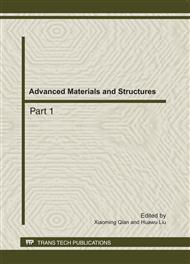p.1079
p.1086
p.1090
p.1094
p.1099
p.1103
p.1107
p.1117
p.1123
Development of FE-Model for Al 5053 Sheet Plate Forming Using Electromagnetic Force
Abstract:
Magnetic pulse forming is based on the principle of generation of a repulsive force called, Lorentz force due to opposing magnetic fields of adjacent conductors. Magnetic pulse forming of light weight materials such as aluminum, magnesium has been studied by many universities, institutes due to its advantages. But magnetic pulse forming is a complicated research area involving different topics in electromagnetic mechanics, plastic working, and materials mechanics. Therefore, development of FE-model of magnetic pulse forming process is a useful approach for better insight into workpiece deformation mechanics with electromagnetic interaction and further provides design and quality control information. To successfully accomplish this objective, a 3-dimensional ax-symmetric electromagnetic numerical model has been developed. The equation was solved using a general mechanics computer program, ANSYS EMAG and LS-DYNA code.
Info:
Periodical:
Pages:
1099-1102
Citation:
Online since:
September 2011
Authors:
Price:
Сopyright:
© 2011 Trans Tech Publications Ltd. All Rights Reserved
Share:
Citation:


